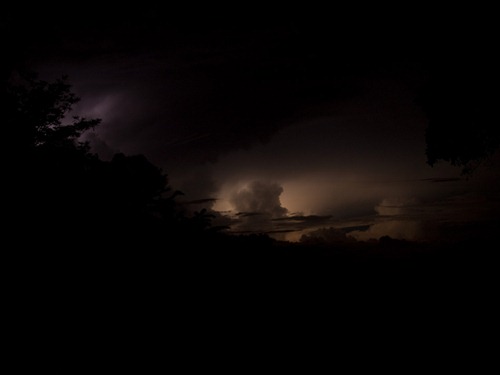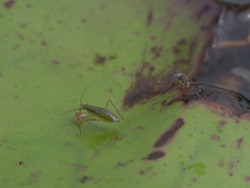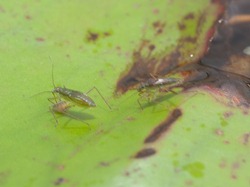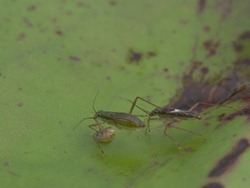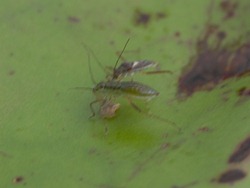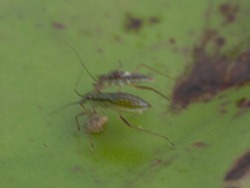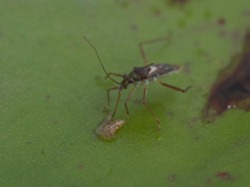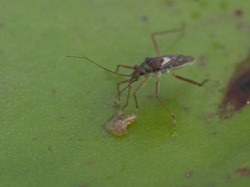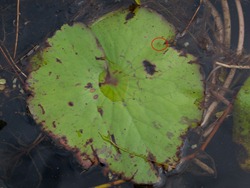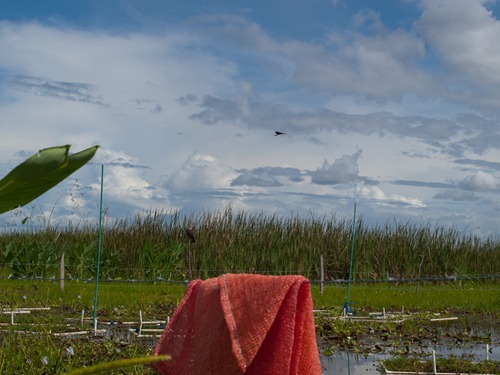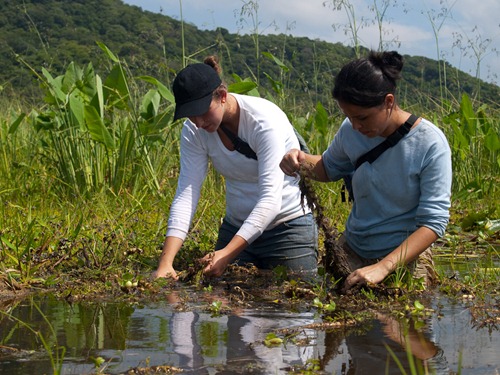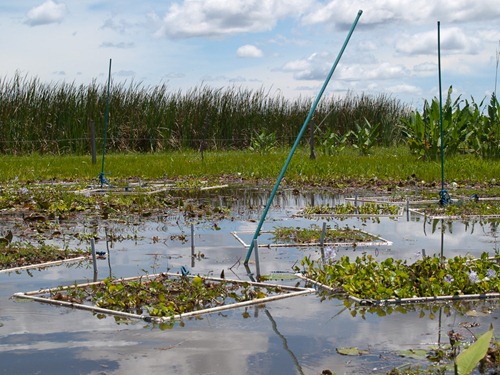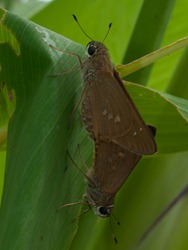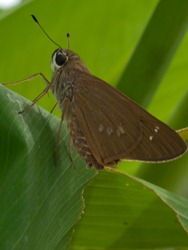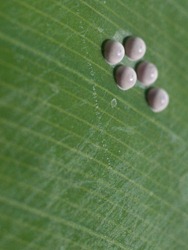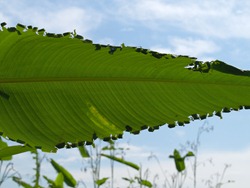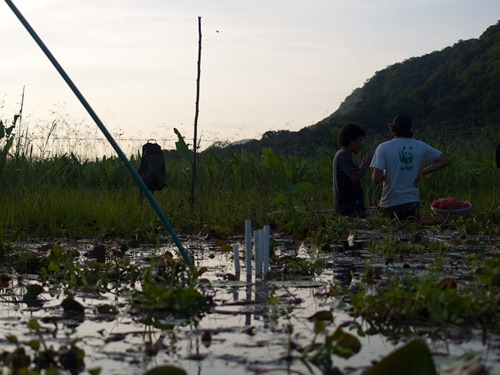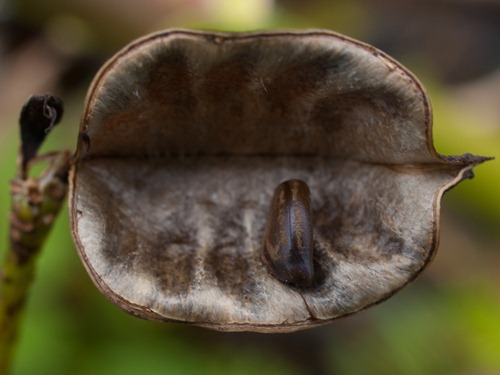Bare limestone is covered in lichens, bromeliads, and orchids where there is sufficient moisture. These ‘hatchlings’ may be the same species I found flowering/fruiting in June. Although I posted a photograph of the flowers, I wasn’t able to find the post… I’m over the 300 mark.
Tag Archives: Palo Verde
Palo Verde Thunderstorms
Insect behavior
If you’ll excuse the poor sharpness in the following sequence, I’d like to share some food stealing behavior I observed and captured between two juvenile hemipterans (mesovelids, I believe).
I also witness the red dragonfly mating, so I can now identify the female. After mating, the male took up a peculiar posture 10 cm above the female, and chased away other males as they approached (mate guarding). He continued while she deposited eggs. Soon, however, a rush of other males came in and the female took off. The original male remained and defended the area, although I’m not quite sure why. Further, the male also chased off all other dragonflies, including several individual dragonflies that were completely black, which I assume are another species.
Snail kites
Most days in the wetland, I observed three snail kites, a family actually. There were two adults and a juvenile at the fence, and most posts were littered with a few apple snail shells. I never though to bring my telephoto lens, so I haven’t taken any real photographs of them, but here, the juvenile is perched on a post in the center of the frame and the smaller of the two adults is flying overhead (I assume it’s the male). While working in the fence, the kites appeared agitated that I was occupying their prime perching locations…
Solomente dos
Only two students braved the wetland last weekend when a large group of student came to Palo Verde from UNA (Universidad Nacional). I hope that’s not the case for the folks coming with Kent State this December…
Fed and Silvia were interested in counting ‘utriculos’ or bladders on Utricularia, but I convinced them to examine Neptunia nodules instead.
Newly filled enclosures
With much help, I’ve filled a new set of enclosures for another competition experiment. This time, I have varied both initial density (8, 16 and 32 plants) and proportion of the two species. I’ve also repeated decomposition bundles within the enclosures, although the picture here doesn’t include them. The density manipulation can be seen with this photograph, though.
Not green, but red
This dragonfly is now much more abundant than the green one. It’d be interesting to see if they share similar food sources and temporally separate emergence to avoid competition.
What evolutionary forces drive dragonfly color?
Hesperidae!
Hesperidae (skipper butterflies) are the Thalia herbivores, according to Tim, an IRES student currently studying termite behavior at Palo Verde.
I’ve observed both swallows (barn swallows + another I’ve yet to identify) and fly catchers (Great kiskadee and maybe another smaller species) capturing the hesperids.


